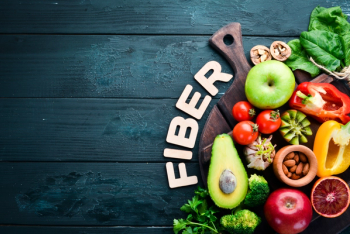
Natural Sweeteners Take Aim with Category-Specific Blends
Stevia blends target dairy, ready-to-drink teas, and cider.
As more food and beverage manufacturers look to make the switch from natural to artificial sweeteners, it may no longer be enough to just offer a range of stevia and other sweetener ingredients. Many formulators are increasingly looking for natural sweetener blends that are already tailored to certain product types to cut down on development time and quickly bring products to market.
With that in mind, PureCircle (Oak Brook, IL) announced the launch of Sigma T, the latest addition to its Matrix Solutions line of category-specific stevia ingredients, at this year’s Institute of Food Technologists’ Annual Meeting & Food Expo (IFT 15). Designed specifically for ready-to-drink teas, Sigma T is meant for mid-to-deep sugar reduction levels and “complements the herbal, earthy notes found in most tea systems,” according to PureCircle.
Sigma T is the second addition to the Matrix Solutions line, following the December launch of Sigma D, which targets dairy applications. According to Faith Son, vice president of global marketing and innovation, Sigma T and Sigma D make use of different glycoside combinations from the stevia leaf to achieve separate targeted results.
“What we’ve discovered is that, not only is each glycoside different, but when you use them in combination with each other, there’s certain synergies or interactions that happen between the glycosides that actually produce another sensory profile,” said Son.
Challenges and Potential of Dairy
Yogurt, milk, and ice cream offer a wealth of opportunities for stevia to replace artificial sweeteners, but it can also be a tricky category to work with. In developing Sigma D, PureCircle found that maintaining dairy’s creamy texture may be an issue for natural sweeteners.
“The big thing that we learned as we got involved with sugar reduction projects in dairy applications is that there’s a whole lot more mouthfeel. As you bring down the sugar, the whole mouthfeel of the dairy product changes,” said Son. “That was one of the big challenges in working with stevia in dairy applications specifically.”
Different flavors may be another factor to consider, especially in yogurts, where fruit notes have to be taken into account on top of the dairy itself, adds Son. She says Sigma D maintains the creamy texture of dairy products and enhances the flavor of fruit ingredients with little or no bitter aftertaste.
Steviva Ingredients (Portland, OR) is also exploring ways to bring natural sweeteners to dairy products, such as flavored milks that have been maligned by schools for being heavy on sugar.
“A lot of the dairy processors are really keen to get chocolate milk back in schools, because a lot of schools don’t allow it,” said Thom King, president and CEO, Steviva. “The government mandate is you have to have less than 10 grams of sugar [per cup].”
“The challenge is you’ve got a product that already has, for one cup of whole milk, 3 grams of sugar. And if you start going skim milk, you’re talking 4 grams of sugar. So you only have that 6 grams to play with, and you also have a lot of restrictions on what you can use.”
One of the best options may be to use a stevia and erythritol blend in sweetening chocolate milk, says King. But many schools are resistant to the use of erythritol in beverages for kids out of fears that it may lead to intestinal distress, like fellow alcohol sugars xylitol and malitol.
“Erythritol is so mild, and particularly when you blend it with stevia, you really don’t get any sort of GI reaction. But there’s still these negative connotations about alcohol sugars,” said King. “So getting it pushed through the school system, I think eventually it will get pushed through.”
And if category-specific natural sweeteners can strike the right balance between reducing sugar and maintaining taste, there could be significant potential for growth in the dairy market.
Bringing Stevia to Cider
Alcohol cider is one of the other category-specific angles that Steviva is investigating. Beyond just sweetening, King points to the fact that stevia won’t create unwanted fermentation as another reason why it’s ideal for cider.
“A lot of the cider producers are using xylitol and lactose, and the reason they do that is they don’t want to get a secondary fermentation going on in the bottle,” said King. He explained that some sugars can create additional fermentation in cider prior to the bottling process, which could raise the alcohol content to unwanted levels and possibly invite a higher tax rate on the product.
“I was thinking about that, and I wondered why the heck cider producers aren’t using stevia or our stevia blend that has erythritol and stevia, because it will produce the same mouthfeel that you would get if you were using any other kind of back sweetening,” said King. “I think that our flavor profile is actually more neutral, so a lot of the real fruit flavor will come out. That’s where our focus has been-really pushing that.”
If the category-specific approach to natural sweeteners continues to gain momentum in the dairy, RTD tea, and cider categories, perhaps we’ll soon be seeing tailored sweetening approaches with other food types that have proven difficult to formulate with in the past. (We’re looking at you, baked goods and confections.)
Read more:
Michael Crane
Associate Editor
Nutritional Outlook Magazine
Photo © iStockphoto.com/Elenathewise
Newsletter
From ingredient science to consumer trends, get the intel you need to stay competitive in the nutrition space—subscribe now to Nutritional Outlook.





